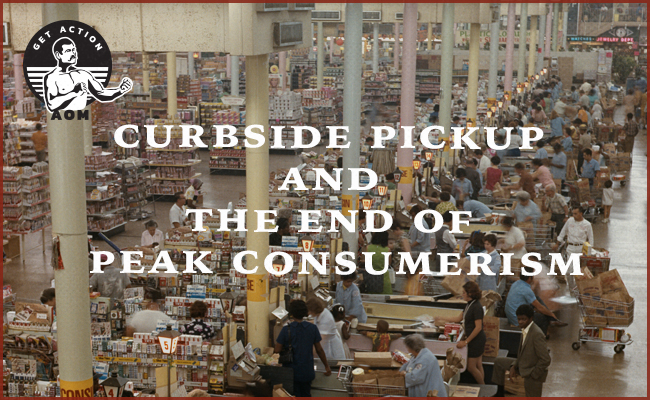
The other day, I found myself walking around a large grocery store, after a several-month hiatus from stepping foot inside one.
I hadn’t avoided shopping out of a fear of COVID-19; rather, our family had just gotten into the habit of having our groceries delivered, because it’s so dang convenient.
After being away from in-store shopping for a while, I felt like I saw the store with fresh eyes. And what I was so strongly struck by, was just how full it was of absolute — and pardon my French, but this is really the most apt word here — bullsh*t food. Flamin’ Hot Funyuns, 3D Doritos, Twix-topped yogurt, Little Debbie Oatmeal Creme Pies Cereal (which admittedly does sound really good). A dozen different kinds of Oreos. Endless varieties of soda and frozen dinners. Aisle after aisle of unnecessary, unhealthy, laboratory-created, market-tested, packaged products that could only be called food in the most generous sense.
This isn’t the observation of a health food crank, a rigid purist. My diet is relatively healthy, but also often includes a daily pack of Pop-Tarts. I’m not opposed to eating a smattering of processed foods.
It also isn’t at all an original observation. Health experts have for years described grocery stores as being nutritional wastelands, and advised the public to only shop the perimeter of the store, the areas where the fresh, whole foods — fruits, vegetables, meat, dairy — are generally positioned.
It’s simply that after having a little sojourn away from the store — becoming a little less acclimated to what, for all the prior decades of my life, was the taken-for-granted backdrop of my grocery shopping experience — I could finally see, for the first time, what these folks had been talking about.
The experience made me want to hastily vacate the premises and return to shopping online.
It also got me thinking not just about the future of the grocery business, but about the future of consumerism in general.
Along with the rise of mass production at the turn of the 20th century, came the specter of overproduction. The amount of goods companies could produce exceeded consumers’ demand for them. To resolve this issue, corporations worked throughout the ensuing decades to increase this demand. This they did through advertising, through branding, and, crucially, through novelty — constantly coming out with new models and updating existing products with new flavors, features, colors.
Novelty triggers dopamine in the brain, and dopamine triggers excitement and desire . . . and desire leads to impulse buying.
Whereas a company might have once produced one variety of hand soap or shampoo, now they made six. Whereas they might have manufactured a couple styles of jeans, now they made a dozen. And whereas consumers would once buy the limited number of products available in the marketplace at a one-stop-shop — the local general store — in order to make room to display the ever increasing number of goods available, new stores had to be created dedicated to particular categories: a store just for groceries, a store just for pharmaceutical/hygiene products, a store just for clothes, a store just for home improvement supplies, etc.
Rather than shopping being a straightforward, functional chore — walk up to the counter of the general store; ask for an item which was shelved behind the counter in a utilitarian way; buy it — it became an experience: music was piped into the background; aisles were designed with evocative displays.
Even if a consumer went to a store or mall with a list of certain items to buy, they invariably walked out with things that weren’t originally on it, having discovered products they hadn’t planned on buying, but which had grabbed their attention as they browsed.
This kind of shopping experience was well in place by the mid twentieth century and became enormously successful in expanding the public’s desire for goods. At the start of the 1900s, an average American still spent nearly 90% of their income on food and other necessities. By 1960, as Vance Packard reported inThe Waste Makers, that picture had dramatically changed:
Today, the average citizen of the United States is consuming twice as much in the way of goods as the average citizen consumed in the years just
No comments:
Post a Comment